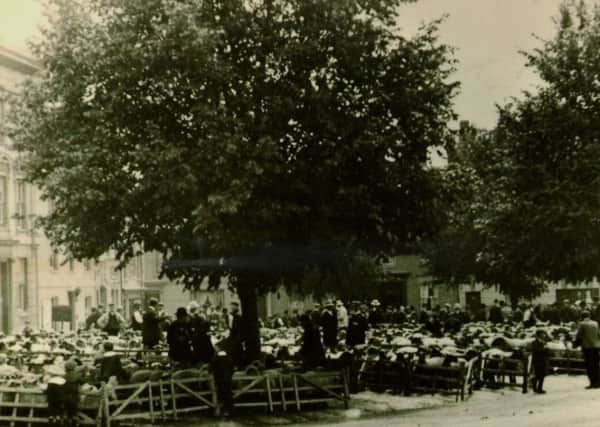Look Back with Little: Exile returns and sees how town has changed


It was headed ‘The Exile’s Return’ and recorded the reaction of an old Banburian who had spent his boyhood locally. Arthur Hughes arrived by a coach that he had boarded at a big unnamed city.
The opening observation was ‘Yes! Banbury has changed’. He then added, ‘It is no longer a sleepy country town’. There was an earlier indication of his shock and surprise on the run in to Banbury.
Advertisement
Hide AdAdvertisement
Hide AdThe coach approached Banbury through Wroxton which he judged was unspoilt. Change came after he had passed the Barley Mow Inn. Gone was Rag Row in the Warwick Road. In place of slum cottages Arthur’s attention was drawn to a new housing estate. This was likely to be Messenger’s development, advertisements for which appear in the same paper. Shortly afterwards he was amazed to find the allotments had been replaced by a police station, which he termed ‘well-designed and imposing’. Soon the coach reached the roundabout at the bottom of North Bar. Sight of this revived a childhood memory of the Good Friday game of marbles played at this site.
A far bigger change awaited him in the Horse Fair. Homes of the elite of 60 years earlier were overshadowed or replaced by hotels, garages and the Regal Cinema (now the Odeon).
Hughes was also totally unprepared for the scale of incursion by multiple stores. Although a goodly number of familiar names appeared on fascia boards in the main shopping streets, there were ‘too few of the best of other grand tradesmen’. They had gone and with them their concern for the welfare of Banbury. Sadly the Advertiser piece does not mention them by name.
Another noted loss was the Red Lion, which in his recollection was ‘beloved by actor, sportsman, the country gentleman and the farmer’. Curiously the replacement FW Woolworth store fails to get a mention.
Advertisement
Hide AdAdvertisement
Hide AdThe Cow Fair (Bridge Street beyond the town hall) held even greater surprises. Sales of livestock were but a memory as they were from the Horse Fair. As for the January Twelfth Fair, which had seen the sale of 600 to 700 horses in the late nineteenth century, it too had gone. Yes, Banbury had indeed changed rapidly since the turn of the century.
Arthur’s perambulation led him along Mill Lane and past the Strugglers Inn to the drawbridge. Here to his delight he found the canal boats he remembered but instead of soft bonnets, thick skirts and underskirts he observed ladies with permed hair and fashionably cut trousers so only their brogue and hardened hands were the same.
One aspect of the canal did please him and that was the sight of fishermen casting their lines in the coal grimed water for gudgeon. He then used the canal towpath to get to the Southam Road. This involved crossing fields (the Marshes) that had been a play area in his youth. However the presence of factories and houses soon disillusioned him as did the presence of cows, which had labels with numbers linked to the livestock market sales.
Something made him leave visiting Banbury Cross until the end of the day. Was it the same Cross he knew as a boy? Then he and his friends had played ‘king of the castle’ on the steps after leaving the British Schools in Crouch Street. The presence of flower boxes set him thinking the Cross had been given an inappropriate context.
Advertisement
Hide AdAdvertisement
Hide AdBy this time he was at the end of his visit. However the sight of a young man with a racing bicycle being timed for a run to and from Warwick reminded him of more leisurely outings with a club. His safety bicycle had been made by Thompsons of Parsons Street.
As Arthur rejoined his coach he was forced to admit his old Banbury had gone. What grieved him most was Banbury in the late 1930s differed only slightly from the big city he had left behind.